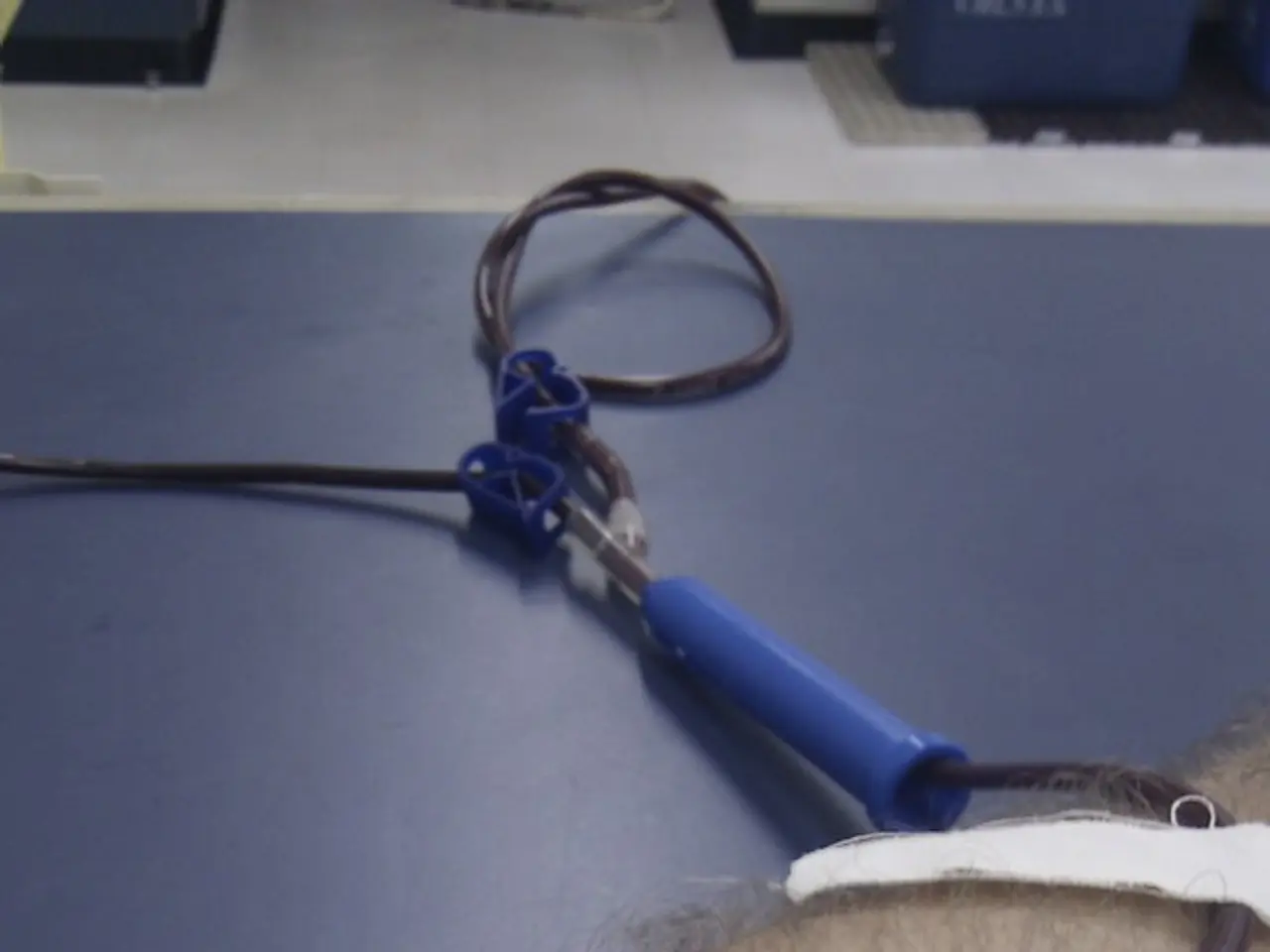Clotting Conundrum: Understanding the Distinctions Between Thrombosis and Embolism
In a nutshell, thrombosis and embolism are serious health concerns that can have severe implications for one's wellbeing.
Thrombosis refers to the formation of blood clots within a blood vessel, often due to an injury or other underlying conditions. These clots, known as thrombus, help seal off the injured site. However, if left untreated, these clots can break off and travel through the bloodstream, leading to an embolism.
Embolisms occur when other substances, such as clots, are trapped in blood vessels, causing a blockage. This can be particularly dangerous when it happens in the lungs, leading to a condition called pulmonary embolism. The primary risks associated with a pulmonary embolism include severe respiratory distress, right heart strain, potential heart failure, low blood oxygen levels, shock, and even death if left untreated or the embolism is severe.
Diagnosing thrombosis and embolism can be achieved through various tests, including MRI, CT scans, blood tests, venography, arteriogram, heart and lung functioning tests, and duplex ultrasound.
Treatment options for thrombosis and embolism vary. In some cases, surgery may be necessary, such as thrombectomy, which involves removing the clot, or catheter-directed thrombolysis, where thrombolytic medications are delivered directly to the clot. Anticoagulant medications are also commonly used to prevent clots from forming.
Prevention is key in managing these conditions. Lifestyle changes such as maintaining a healthy weight, quitting smoking, regular exercise, staying hydrated, avoiding prolonged periods of sitting, treating chronic inflammatory conditions, managing unhealthy blood sugar levels, taking medications as prescribed, discussing estrogen-based medication use with your doctor, using compression socks, keeping legs elevated, daily muscle stretching, and wearing loose-fitting clothes can help reduce the risk of blood clots.
While the outlook for mild cases of thrombosis and embolism is generally good, with symptoms resolving within a few days to weeks of medication and lifestyle changes, complications can arise in moderate to severe cases. These may include swelling, pain, skin discoloration, tissue damage, heart attack or stroke, organ failure, loss of limb, brain or heart damage, and ulcers.
Inferior vena cava filters are small bits of mesh surgically placed over the clot to catch emboli, providing an additional line of defence against potentially life-threatening complications.
Long-term complications for people with deep vein thrombosis (DVT) are generally related to reduced blood flow. Approximately 30% of people with a combination of DVT and pulmonary embolism (PE) develop new clots within 10 years. This underscores the importance of ongoing monitoring and management of these conditions.
In conclusion, while thrombosis and embolism can pose significant health risks, early diagnosis, appropriate treatment, and preventative measures can help manage these conditions effectively. It's always advisable to consult with a healthcare professional for personalised advice and guidance.
Read also:
- MERS (Middle East Respiratory Syndrome): A Comprehensive Overview and Treatment Guide
- Strategies to Maintain Optimal Eye Health Throughout Aging Process
- Hearings on the HHS Budget Detail a Fresh Approach for Public Healthcare Policies
- Navigating Life with PTSD: Techniques for Managing Anxiety and Recurring Flashbacks






